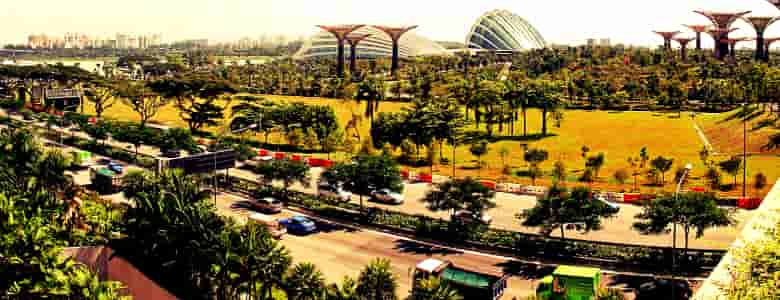On the road with IoT

Transportation systems are evolving to meet the needs of a world on the move, and networks are playing a key role.
From high-speed trains to self-driving cars, transportation systems are harnessing the power of Internet Protocol (IP) connectivity to increase safety, reduce congestion and energy use, and improve operational performance.
Singapore was one of the pioneers in implementing electronic congestion charging to manage traffic jams, institutionalizing the Electronic Road Pricing (ERP) scheme in 1998.
The nation has since gone full circle, and has plans to launch a satellite-based ERP system.
This is part of the government’s Smart Mobility 2030 blueprint, which was unveiled in 2014.
The plan seeks to create a safer and better travel experience for users through interactive elements and technology. The plan also shared aspirations for driverless buses and talking cars.
We are 13 years away from 2030, but how near are we to a truly Intelligent Transport System (ITS)?
IoT and transportation
One area of our lives that is being impacted on a massive scale by the IoT is the field of transportation.
Let’s assume that we would all like to see automobile commuters freed up by 90 percent to either relax, play games, sleep, or maybe catch up on some work, while en route to and from their jobs rather than fighting the all-too-prevalent traffic jam.
Dare we dream that over the next 13 years, an improvement in efficiency of movement — getting from point A to point B — by 75 percent for all manner of travelers is achievable?
Why not shoot for the moon and let’s go for a reduction in vehicle-related fatalities by 99 percent compared to current levels by 2030?
Could you get behind these lofty goals?
ITS just might make all of these things happen, and they will do it by harnessing the power of IoT.
Smarter roads
ITS serves the role of communicating information about an array of road conditions.
In particular, travelers and first responders will be provided with dynamic, contextually-relevant instructions that suggest the appropriate action required.
How do they work?
Roadside sensors and cameras gather data about traffic, weather, and other environmental conditions supported by a vast network of communication pipes that parallel the roads themselves enabling them to respond accordingly.
Instructions can be sent to digital signage that may include messages for travelers about conditions ahead or the system may simply change the street signaling pattern to adjust traffic flow conditions.
The posted speed limit can also be changed accordingly, alerting drivers to slow down during wet weather.
In time, systems will communicate directly with vehicles, which by then will be largely self-driven, and vehicles will adjust their speed and traveling behaviour to optimally-respond to prevailing conditions.
These systems constitute the most advanced expression of the vehicles’ information highways. Demands being placed on these information highways are exponentially growing in both volume and complexity.
This calls for significant reinvention and upgrading of traditional ITS infrastructures and, like the rest of the world, the transportation sector has come around to recognize the virtues of IP.
They need the right network infrastructure tools to provide a robust and reasonably administered ITS network to accommodate the explosion of the IoT on our roads.
Realizing Smart Mobility 2030
The Singapore government is well ahead of the curve when it comes to scoping out and beginning to build the ITS network to accommodate the future IoT.
However, what do urban planners in Singapore and elsewhere need to consider when evaluating the right network infrastructure tools to leverage?
Here are some of the key factors involved:
-
Environmental conscientiousness — The chosen network needs to be built to handle whatever the elements throw at it: Harsh temperatures, vibration, and dust conditions. In short, it’s built for the road.
-
Resiliency — The chosen network should offer unmatched redundancy and availability for robust deployment topologies such as rings, stars, and mesh configurations.
-
Extended IoT lifecycle — The chosen network needs to be able to handle today’s cameras and sensors and those that are being designed and built for tomorrow. Support for 1G and 10G uplinks is required to ensure an upgrade path for the bandwidth requirements of tomorrow.
-
Ease of deployment and maintenance — The chosen network should offer elegant, automated, virtually zero touch deployment options, along with powerful and easy-to-use monitoring and control.
Singapore is set to host the 26th ITS World Congress in 2019.
With the right network infrastructure tools, delegates to the ITS World Congress might just travel in style via driverless and talking vehicles when in Singapore.
Now that is one scenario worth driving well.
This commentary was contributed by Mr Amit Bathla, Vice President, Marketing, APAC, Alcatel-Lucent Enterprise (ALE).
The views expressed are solely the contributor's own, and do not reflect any official position of GovTech.


